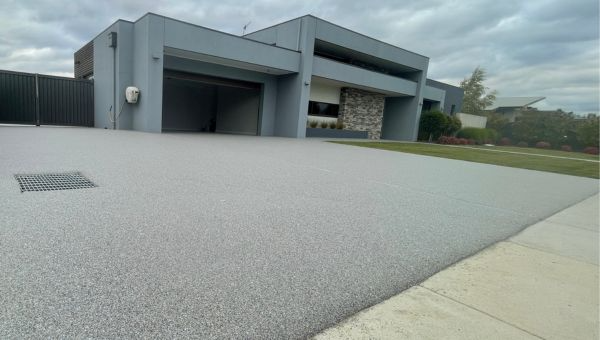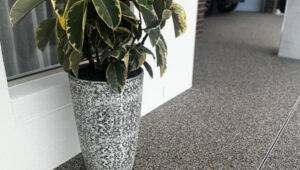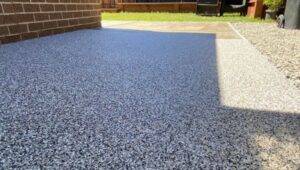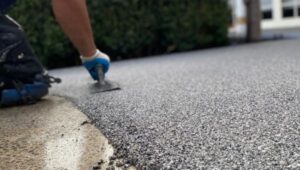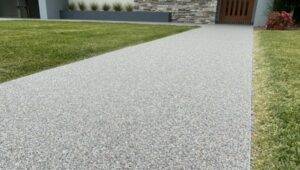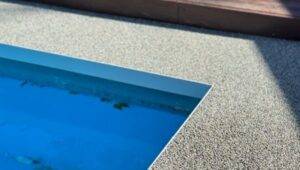Permeable pavement refers to an innovative construction technique using eco-friendly materials that permit rainwater seepage through, more effectively controlling runoff than conventional surfaces such as concrete and asphalt that obstruct this process.
Permeable paving was originally developed as an ecological stormwater management strategy by returning excess rainwater into its ecosystem instead of collecting on top surfaces such as this.
Permeable Paving Benefits
Permeable pavement can offer many distinct advantages over more conventional forms of paving, including lower costs and enhanced water drainage.
Storm Water Management* Permeable pavement allows rainwater to infiltrate through its surface, helping decrease surface runoff while relieving strain from drainage systems.
Recharging Groundwater Resources Permeable pavement plays a key role in replenishing groundwater resources by allowing rainwater to seep directly into the soil, maintaining natural hydrology balances, and upholding environmental equilibrium.
Pollution Reduction The filter used with permeable pavement systems removes sediments and pollutants from stormwater runoff to improve its quality and reduce environmental contamination in surrounding areas.
Reduce Urban Heat Island Impact Permeable surfaces tend to be cooler than impermeable ones, helping lower temperatures by decreasing urban heat islands and temperate extremes.
Permeable Paver Systems Provide the Ideal Combination of Landscaping & Aesthetics Permeable paver systems are an effective way to add design flexibility, and aesthetic appeal, and integrate easily with other landscaping elements such as gravel or decorative pavers for seamless designs.
Permeable Paving Types Permeable pavement covers an expansive array of materials and designs tailored specifically for specific environmental or application criteria.
Asphalt Porous: Porous asphalt consists of aggregates mixed with an asphalt binder to allow water to seep into its subsurface voids, creating an ideal surface for roads, parking lots and driveways.
Permeable concrete consists of aggregates held together with cementitious glue and interconnected holes that permit water seepage while still providing structural support to low-traffic pavements, patios, sidewalks, or parking lots with relatively light foot traffic.
Pavers Permeable: Today’s market offers many kinds of permeable pavers that allow water seepage into the soil below them – from interlocking units and modular units to grass and gravel pavers with holes designed to let water permeate into it from below. You’ll find these pieces everywhere from parking lots and pedestrian pathways to plazas and plazas.
Permeable pavers offer many distinct advantages and characteristics, so when making their decision based on site conditions and traffic loads, aesthetic preferences, or site aesthetics they should select one accordingly.
Site Prep
Clean away all vegetation or debris in the area. Graduate the surface so excess water drains away from buildings, structures and structures. Edge restraints must also be installed to contain permeable paver materials. Base Installation
An excavation area should be excavated at an appropriate depth, taking into account both thickness and material requirements for pavers.
Install a permeable aggregate base layer such as crushed stones or gravel for drainage and structural support purposes as well as load bearing capacity and stability when installing pavers. Compacting this base layer will achieve the desired load-bearing capacities and stabilities for paver installations. PAVER Installation
Permeable pavers must be laid out according to your preferred design or pattern in order to allow water infiltrating through. To maximize infiltration rates, they should be aligned and spaced appropriately – edge restraints and borders may help preserve pavement integrity; filling joints will further guarantee its preservation.
Filing gaps between pavers with gravel or sand to fill any spaces between pavers using joint filler will keep them from shifting while providing support and fixing their position. When finished off by sweeping away debris or any excess joint filler.
Compaction can best be accomplished using a roller or compactor.
Potential Pitfalls and Best Practices
Establish an appropriate drainage system in order to avoid ponding. Only install high-quality products according to manufacturer recommendations, and regularly check the surface for signs of erosion or damage.
Before driving or operating heavy machinery on your newly laid permeable pavement, allow it to fully cure and settle before driving over or operating heavy equipment on it. Maintain your permeable pavement to keep it looking its best.
Building Owners and Managers Should Understand Maintenance Requirements for Success
Regularly inspect the surface of permeable pavement for signs that it has become clogged or damaged, or has accumulated sediment deposits. When necessary use vacuuming or pressure washing to clear away surface debris. Remove vegetation that might obstruct drainage joints or channels for efficient drainage. * To Address Issues
Vacuuming surfaces and joints will help clear away debris accumulating on them, while for increased permeability surface rejuvenation or decompaction should be implemented for continued performance and cost control. Adopting routine maintenance procedures will also keep costs under control.
Maintain an ongoing maintenance program to address cleaning and repairs as required, training maintenance staff on how to efficiently maintain permeable pavement systems, and reaping the environmental advantages. Its Environmental Benefits Utilizing permeable pavement has many environmental advantages:
Reduce Urban Heat Island Effect Permeable surfaces are designed to absorb less heat, helping to moderate temperatures by moderating extremes and reducing extremes. Recharge Groundwater Permeable pavements allow rainwater seepage through their holes into underground aquifers for replenishment while supporting ecosystems simultaneously.
Water Quality Enhancement A permeable pavement system’s filter system works to filter stormwater runoff to remove sediments and pollutants polluting streams, leading to healthier ecosystems and cleaner waters. Compliance considerations
Permeable pavement should only be employed in projects which adhere to local guidelines and regulations prior to installation, in order to obtain all of the necessary approvals or permits from all appropriate authorities.
Checking local building codes, standards, and regulations related to erosion control and stormwater management in your region.
Considerations Regarding Cost mes Permeable pavements may initially cost more, but in the long run can lead to significant cost-cutting benefits through reduced maintenance expenses and stormwater management costs.
Future Trends and Inventions
Advanced Materials: With research and development comes a promise of new materials with enhanced durability and aesthetic appeal, including recyclable materials, nanotechnology applications, and bio-based binders that could revolutionize permeable pavement industry.
Sensor technology and IoT capabilities enable real-time monitoring of surface conditions, water flow rates and maintenance requirements, providing real-time visual status updates on performance improvements and reduced costs that will ultimately boost sustainability. Smart Paving Systems
Forecasted trends and innovations of tomorrow
Advanced Materials: With research and development comes a promise of new materials with enhanced durability and aesthetic appeal, including recyclable materials, nanotechnology applications, and bio-based binders that could revolutionize the permeable pavement industry.
Sensor technology and IoT capabilities enable real-time monitoring of surface conditions, water flow rates and maintenance needs; providing real-time visual status updates about performance improvements and cost cuts which ultimately contributes to greater sustainability for Smart Paving Systems.
Climate-Responsive Design: With climate change becoming an ever-more pressing concern, future permeable pavement solutions could feature climate-responsive features to easily adapt to shifting environmental and weather conditions – such as self-healing abilities or modular designs with adjustable permeability levels – including self-healing abilities or self-healing properties.
Integration With Green Infrastructure Permeable pavers may integrate more easily with green infrastructure components like rain gardens and bioswales to deliver optimal stormwater management and urban greening results that enhance environmental benefits while making built environments more resilient.
Implications of Building Code Change for Construction Industries
Construction firms can become leaders in environmental protection and sustainable development by adopting cutting-edge permeable pavement technologies. Permeable pavement can increase project resilience while mitigating risks related to regulatory compliance and strengthening community relations.
Permeable pavement solutions offer an outstanding way to save money, enhance project results, and gain a competitive edge in the marketplace.
Conclusion
Permeable pavement offers an effective solution to counter some of the adverse side effects associated with urbanization, including reduced runoff from stormwater runoff, improved water quality, and mitigating urban heat islands by permitting rainwater infiltration into soil layers. Not only are its environmental benefits significant; but its benefits extend far beyond them to include economic savings, complying with regulations, and providing resilience within communities.
Permeable pavement is an integral component of sustainable building projects, providing builders with a way to promote healthier communities while simultaneously showing their environmental commitment. Permeable paving will become even more prominent as construction evolves.

